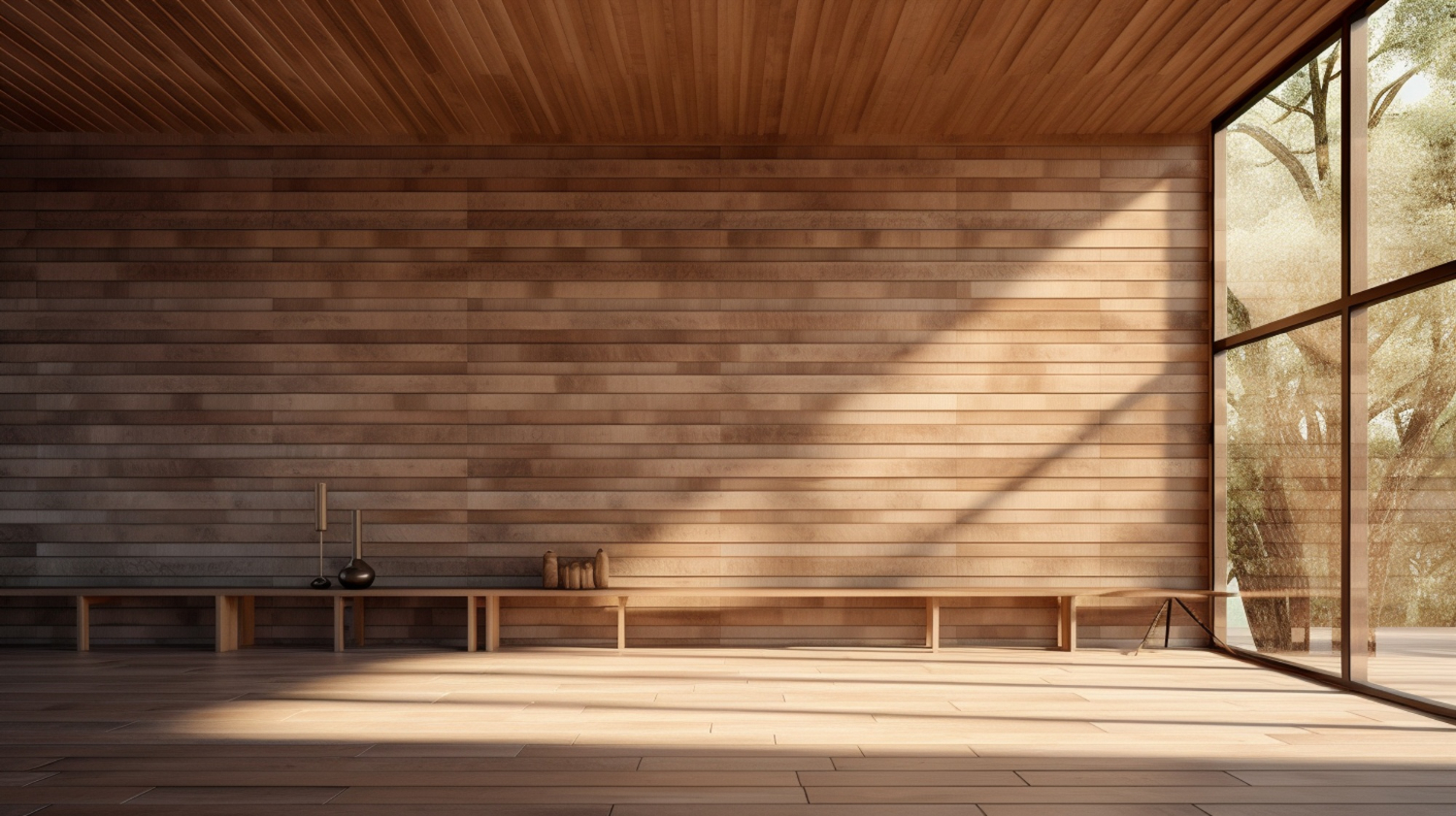
Wall cladding is a variable and stylish way to increase interior spaces. Whether you are looking to add texture, depth, or a unique aesthetic to your home, It offers endless possibilities.
In this article, we will explore the various creative uses of walls in interior design, focusing on how stone wall cladding interior, textured wall cladding, and innovative wall cladding designs can transform your living spaces.
By understanding the different types of cladding and their applications, you can make informed decisions to elevate your home's interior design.
Stone wall cladding interior designs bring a natural, timeless engagement to any room. Whether you prefer a rustic, traditional look or a sleek, modern style, stone can complement various looks.
This type of cladding is perfect for feature walls, fireplaces, and even kitchen backsplashes, adding a touch of elegance and texture to your home. One of the main benefits of stone wall cladding interior is its durability and low maintenance.
Stone is a resilient material that can withstand wear and tear, making it an ideal choice for high-traffic areas. Additionally, stone cladding provides excellent insulation, helping to keep your home warm in the winter and cool in the summer.
When selecting wall stone cladding, consider the color, texture, and size of the stones. Lighter stones can brighten a room and make it feel more spacious, while darker stones add warmth and coziness. Mixing different textures and sizes can create a dynamic, eye-catching feature that serves as a focus in your space.
Textured wall cladding adds dimension and character to your interiors. This type of cladding comes in various materials, including wood, metal, and synthetic options, each offering unique textures and finishes. It can be used to create a modulation wall, adding visual interest without overwhelming the space.
Wooden wall textured cladding is a popular choice for creating a cozy, rustic atmosphere. It can be installed in horizontal, vertical, or diagonal patterns, allowing for creative customization. Metal cladding, on the other hand, brings a modern, industrial feel to your interiors. It is available in a range of finishes, from brushed to polished, and can be used to add a sleek, modern touch to your home.
Synthetic wall textured cladding offers originality and affordability. These materials can mimic the appearance of natural stone, wood, or metal, providing a cost-effective alternative that is easy to install and maintain. With a variety of textures and finishes available, synthetic cladding can be tailored to suit any design preference.
Wall cladding designs are limited only by your imagination. From traditional to modern, there are countless ways to incorporate walls into your interior design. Some popular wall designs include geometric patterns, mosaic tiles, and 3D panels, each offering a unique look.
Geometric wall designs use shapes like squares, triangles, and hexagons to create intricate patterns that add a modern, artistic flair to your space. These designs can be achieved with various materials, including wood, metal, and stone, allowing for endless customization.
Mosaic wall designs involve arranging small tiles or stones in intricate patterns to create a visually stunning feature. This type of cladding is perfect for bathrooms, kitchens, and entryways, where it can serve as a focus and add a touch of luxury.
3D wall panels are another innovative design option. These panels come in various patterns and textures, creating a three-dimensional effect that adds depth and interest to your walls. 3D panels can be used to create a dramatic statement wall or to upgrade the overall texture of a room.
Including walls into your interior designs can transform your home into a stylish, welcoming space. Whether you are renovating a single room or updating your entire home, it offers a range of benefits, from beautiful appearance to practical functionality.
In the living room, it can create a cozy, inviting atmosphere, perfect for relaxing with family and friends. Textured wall in the dining room can add a touch of refinement and elegance, making it an ideal setting for entertaining guests. In the bedroom, it can provide a serene, tranquil environment, promoting restful sleep and relaxation.
It is also an excellent choice for commercial spaces, such as offices, restaurants, and hotels. It can upgrade the overall vibrations, create a memorable impression, and even contribute to branding and identity. By selecting the right cladding materials and wall designs, you can create a compatible, stylish environment that reflects your personal taste and lifestyle.
It is a variable and stylish solution for increasing interior spaces. Whether you choose it for its natural beauty, textured wall for its unique character, or innovative wall designs for their modern appeal, you can transform your home into a stunning, welcoming environment. By understanding the various types of wall and their applications, you can make informed decisions that elevate your interior design and create a space you love.
1. What are the benefits of stone wall cladding?
It offers durability, low maintenance, excellent insulation, and a timeless engagement, making it a popular choice for various interiors.
2. How do I choose the right wall textured cladding?
Consider the material (wood, metal, synthetic), color, texture, and overall design style. Think about the quality you want to create and select cladding that complements your interior.
3. Can wall stone cladding be used in bathrooms?
Yes, certain types, such as stone and synthetic options, are suitable for bathrooms. They are durable, moisture-resistant, and can add a touch of luxury to the space.
4. What is the cost of cladding the wall?
Its cost varies based on the material, design, and installation. Natural stone is typically more expensive, while synthetic materials offer a more budget-friendly alternative.
5. How do I maintain cladding?
Maintenance depends on the material. Stone cladding requires periodic sealing, while wood may need refinishing. Synthetic cladding is generally low-maintenance and can be cleaned with water.












